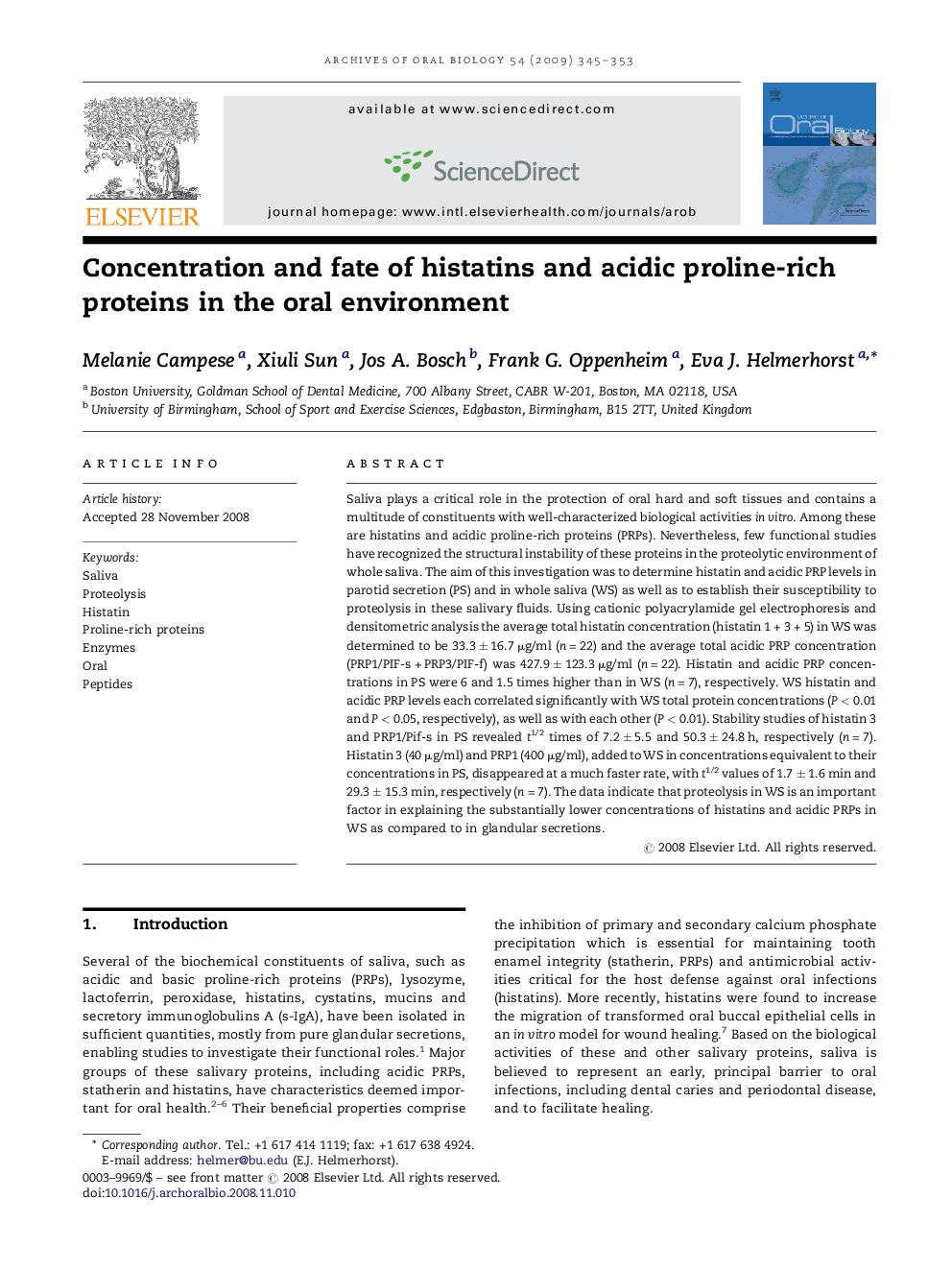| Article ID | Journal | Published Year | Pages | File Type |
|---|---|---|---|---|
| 3121255 | Archives of Oral Biology | 2009 | 9 Pages |
Saliva plays a critical role in the protection of oral hard and soft tissues and contains a multitude of constituents with well-characterized biological activities in vitro. Among these are histatins and acidic proline-rich proteins (PRPs). Nevertheless, few functional studies have recognized the structural instability of these proteins in the proteolytic environment of whole saliva. The aim of this investigation was to determine histatin and acidic PRP levels in parotid secretion (PS) and in whole saliva (WS) as well as to establish their susceptibility to proteolysis in these salivary fluids. Using cationic polyacrylamide gel electrophoresis and densitometric analysis the average total histatin concentration (histatin 1 + 3 + 5) in WS was determined to be 33.3 ± 16.7 μg/ml (n = 22) and the average total acidic PRP concentration (PRP1/PIF-s + PRP3/PIF-f) was 427.9 ± 123.3 μg/ml (n = 22). Histatin and acidic PRP concentrations in PS were 6 and 1.5 times higher than in WS (n = 7), respectively. WS histatin and acidic PRP levels each correlated significantly with WS total protein concentrations (P < 0.01 and P < 0.05, respectively), as well as with each other (P < 0.01). Stability studies of histatin 3 and PRP1/Pif-s in PS revealed t1/2 times of 7.2 ± 5.5 and 50.3 ± 24.8 h, respectively (n = 7). Histatin 3 (40 μg/ml) and PRP1 (400 μg/ml), added to WS in concentrations equivalent to their concentrations in PS, disappeared at a much faster rate, with t1/2 values of 1.7 ± 1.6 min and 29.3 ± 15.3 min, respectively (n = 7). The data indicate that proteolysis in WS is an important factor in explaining the substantially lower concentrations of histatins and acidic PRPs in WS as compared to in glandular secretions.
